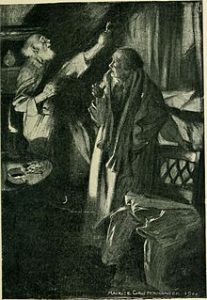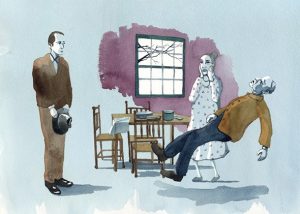Demolished Human Rights in an Industrialized World
W.W. Jacobs’ “The Monkey’s Paw” (1902) and Human Rights
by Elifsu Gürtaş

The Industrial Revolution that happened between the 18th and 19th centuries has affected the course of technological advancements. The more products the factories began to manufacture thanks to mass production, the more labourers started to be employed in large factories. The notion of constant production influenced the social relationships of working-class families since the people had to work day and night. The house became a place where people only ate and slept without communicating. The short story “The Monkey’s Paw” written by W.W. Jacobs is an example of this issue since it deals with the White family’s tragic loss of a child due to an industrial accident. The White family gets 200 pounds from the Maw and Meggins company as compensation for their son’s death in the machinery. However, they believe that the monkey’s paw that they used to wish for 200 pounds caused their son’s death.
The authorized person, who has arrived at the White’s house to announce the fatality, demonstrates the disrespectfulness of the industrial world by saying that “although they don’t believe that they have a legal requirement to make a payment to you for your loss, in view of your son’s services they wish to present you with a certain sum” (27). The company has violated an employee’s right to live and work in a safe environment. In addition, they try to legitimate their misconduct by making the family believe that the cause of death was not under their responsibility. Ms White also reveals that she has sacrificed her other children for the sake of the company and her son “was the only one left” (27). Instead of bursting out in rage caused by the experienced injustice, the White family blames a supernatural object, the monkey’s paw, for the loss of their child. The short story criticizes that the families exposed to inhuman treatment by the companies accept their low living standards because they fear losing more than what they have.
The companies have started to give assurance for social security and significant life standards for the employees and their families with the beginning of technological development. However, none of the authorized people intimately care about their promises and the rights of their employees as it is in the story. Although working-class families are inwardly aware of the violation of their human rights, they concede the standards given because of their needs. The courage to resist and unite against the violation means taking the risk of becoming homeless and jobless for the people so they do not want to sacrifice more from their belongings. As one person has the right to live with certain standards, the one also should be provided with the right to resist for its sake without the danger of losing other rights. (460)

The Lady of the Barge and Other Short Stories. W.W. Jacobs. Charleston: BiblioBazaar. 1902/2007.
